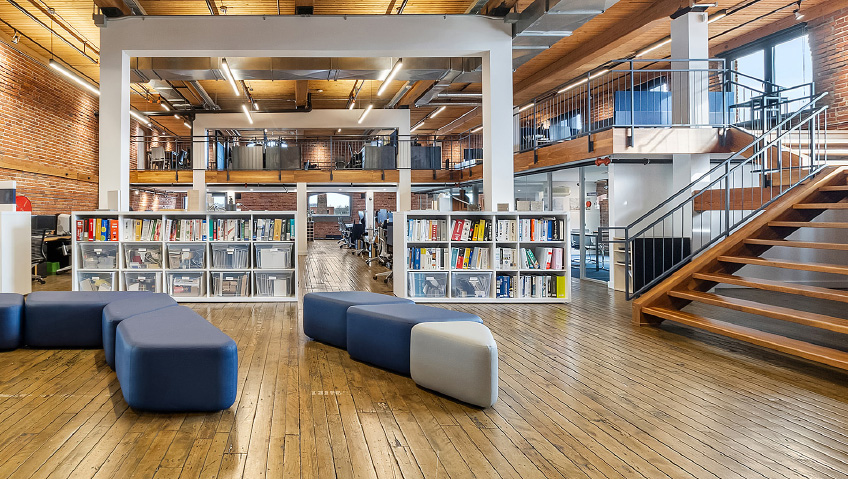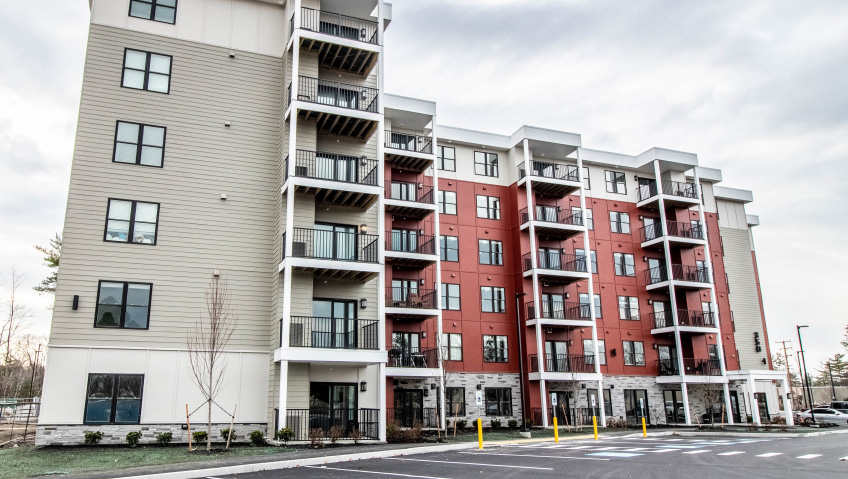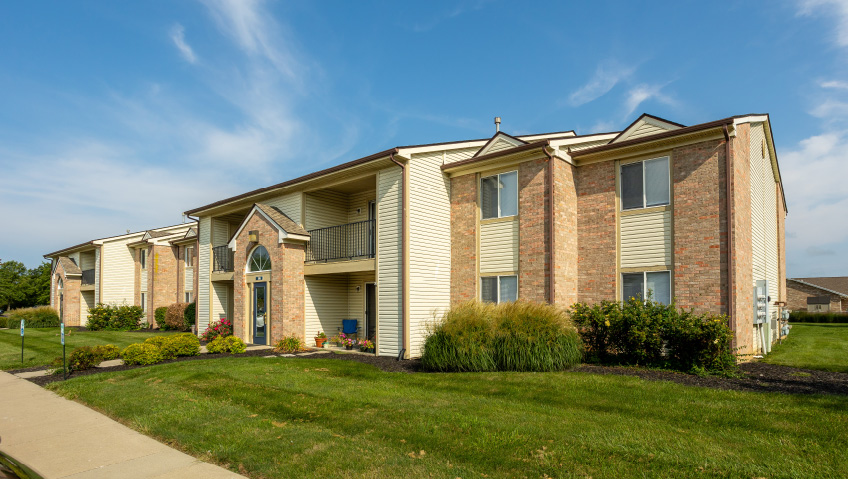In just 30 years, Window City Canada has become one of the country’s top window and door experts, and the facts behind the company’s success speak for themselves.
Leading the industry through ongoing innovation, the company has grown to occupy an impressive 400,000-square-foot manufacturing facility in Vaughan, Ontario. Investing heavily in technology, equipment, and automation makes Window City a one-stop source for quality windows and doors; in fact, the company’s products are designed, precision-engineered, and manufactured to exceed every testing standard by 30 percent or more. This makes them long-lasting and able to withstand even extreme Canadian weather.
Investing in quality
“We are probably the most automated window company in North America, and one of the leaders in the window industry,” states Jeff Sadr, “and we have what people need to give them the best service and best products.”
Window City’s long-time Chairman and CEO, Sadr grew up in the family-owned business and has played a vital role in its ongoing success.
Unlike much of the competition, which typically buys materials like glass from outside suppliers, Window City does it all in-house. This keeps proving to be a huge advantage for the vertically integrated company, since it guarantees quality control and allows for fast turnaround. And since the company isn’t dependent on outside suppliers, supply chain issues like delays and lack of inventory aren’t a problem. In every way, Window City isn’t ahead of the curve: they are the curve.
“We mix our own compound,” explains Sadr. “We’ve extruded our own window frames for many years, and we make our own glass. Everything is vertically integrated in our operations, right from resin to finished products. Our finished products are custom-made for every customer, and everything happens in my own building. I buy resin, raw glass and hardware—the rest I do in-house.” From software to machining, welding to cleaning, the work is completely automated.
Realizing automation was the future of the windows and doors industry, Window City became the first in the sector to invest in software. That was 20 years ago, when Sadr brought the technology to Canada from Germany to build the company’s operations, integrating all aspects of the business from making the windows to shipping.
Along with software and automation, the company was the first to introduce capstock technology from Europe to the Canadian market for its vinyl windows. Made from polymer compounds, capstocks are extruded to create durable layers, or ‘caps,’ of varying thickness over plastic materials. Along with added protection and great performance, capstocks enabled Window City to break free from all-white windows and offer customers coloured products to match their aesthetics and vision.
Leading the way
“Technology, the best price possible, and the best service possible: those have always been the traits of my business,” states Sadr. “And we know the future is going to be tough for a lot of our competitors to keep up with technology, but we are ahead of the technology curve right now.”
In this vein, Window City continues funding research and development, including studies on energy efficiency. This is especially relevant today, with skyrocketing costs for both natural gas and electricity to heat and cool homes. When the Government of Canada introduced a new standard for Energy Star® in April 2019—with changes coming into effect on January 1, 2020—Window City became one of the first Canadian companies to partner with the program, and issued an announcement on its website at https://www.windowcity.com/energy-star-program-changes-coming-up-in-2020.
Always proactive, Window City was implementing environmental initiatives long before the federal government introduced its 2030 Emissions Reduction Plan and objectives to drive emissions to Net Zero by 2050. One way to achieve this goal is through better-quality windows and doors, which will also save heating and cooling costs.
Backed by data, 85 to 90 percent of the company’s windows are energy-efficient, especially sealed, gas-filled units made with double or triple glass. All Window City products are attractive, highly functional and long-lasting, with quality hardware. “We have over two million windows out there performing every day in the Canadian climate,” says Sadr.
Glass technology itself has also improved vastly over the years. Making large investments in glass manufacturing, the company expects to take delivery of fully automated conveyors from Europe by the end of this year. “With our windows, the future is all about the glass and good frames,” he says. “We are one of the very few in the world to have this technology.”
Delivering value
Until about two decades ago, Window City sold directly to dealers and contractors, who then sold product to homeowners. As the company’s brand reputation grew, many contractors began contacting the team directly. Window City provided leads to contractors and dealers, who then began going to homeowners, selling windows and offering installation services.
Known initially for providing vinyl windows for the residential family home renovation and replacement market, the company saw a shift toward more business in custom homes, and pivoted accordingly. This was at the time the company brought in capstock colours, since custom home owners wanted to complement their new brick or stone façade.
“Right now, 50 percent of our business comes from new construction, custom homes, and the other 50 percent comes from home renovation and replacement,” says Sadr. The company also deals more and more with architects and designers who recommend their products to customers.
SkyCity
Along with Window City, the company created SkyCity Windows to meet demand for very large aluminum-frame doors and windows. Becoming a developer, the company takes on its own high-rise condos from 15 to 50 storeys, using its own SkyCity aluminum windows. At the same time, the business is developing aluminum windows for residential clients. “In the past eight to 10 years, the trend is toward big homes with massive expanses of glass,” explains Sadr. “You need to support those kinds of homes with aluminum frames. They have to be strong and sturdy, and vinyl really isn’t the full solution for that.”
To meet demand, SkyCity has developed a full range of aluminum frames geared toward high-end homes, including large sliding doors, swing doors, lift and slide doors, bi-fold doors, entrance doors, and more.
Unlike anything else on the market, SkyCity doors are truly marvels of engineering. Recognizing the importance of design, SkyCity works with award-winning hardware companies that make unique products like airplane door handles. Today, it is not uncommon for clients to request massive windows and doors 20 to 24 feet tall and 10 to 18 feet wide, and these styles of doors often open directly onto balconies or backyards.
“The idea behind these bi-fold doors is really to bring the outdoors in, so you create a seamless connection between inside of your house and the outside of your house,” says Scott Goodman, the company’s Vice President of Sales and Marketing. “The door essentially accordions out of the way, and you have this giant open area you can pass through unobstructed. We have products designed to accommodate pretty much any application for these ultra-high-end luxury homes.”
Much like custom homes themselves, high-rise developments with striking, complex glass enclosures are becoming more popular. Through SkyCity, the team can manage an entire housing project and fabricate all components in its facility. Depending on customer expectations, SkyCity can meet every request, including triple glass, tempered glass and safety glass. Vertically integrated in the condominium market, work is performed in-house, including the unique window wall system awnings, metal panels, louvers, glass, railing systems, curtain walls, and more.
“It is driven by a different software system, but we have the same philosophy we’ve employed on the vinyl side for aluminum as well,” Goodman explains. “Everything is fabricated locally and shipped to site. This includes project management, with all requirements from architects and designers met in-house.”
The way of the future
“Most customers want everything included: supply, delivery, and full installation by our team, and that’s how we operate—turnkey,” says Sadr. “With that, customers have peace of mind; they are going to get everything they want for their house without going from one contractor to another. That’s not the way it’s going for the future; everything is going to be turnkey.”
To ensure quality standards in its own facility, the company has all raw materials and window systems inspected by third parties—including Energy Star®—with windows validated for thermal performance, proof of argon gas, and more. “It costs us money, but we do it,” explains Sadr. “After 30-plus years, our company has no legal suits because what we say is what we deliver.”
In the years to come, he believes vinyl windows will remain a popular, economical product in the residential market, and most efficient for single-family homes. “Vinyl has developed extensively over the years, and with the nature of PVC, the thermal break and everything else, it is the best product for 80 to 85 percent of the housing market; it will be vinyl for the next five to 10 years.”
In the high-end custom home arena, aluminum will remain popular, since it outperforms any other window system, including fiberglass and wood. Combining a superior, environmentally friendly, powder-coated aluminum finish inside and out with state-of-the-art glass technology means the company’s windows will still be in use many years from now.
Since Window City performs so much work in-house, the company is in charge of its own destiny, and sure to remain the industry frontrunner for a very long time. “If you don’t own the glass technology in your windows, you’re going to be out of the game in the next five to 10 years,” Sadr predicts. “85 percent of window technology is in the glass; if you don’t have the technology in your hands, you won’t be able to compete in the industry in the coming years. In the future, we will be ahead of the curve. Even if we didn’t make any improvements for the next 10 years, we’d still be ahead of the curve.”






